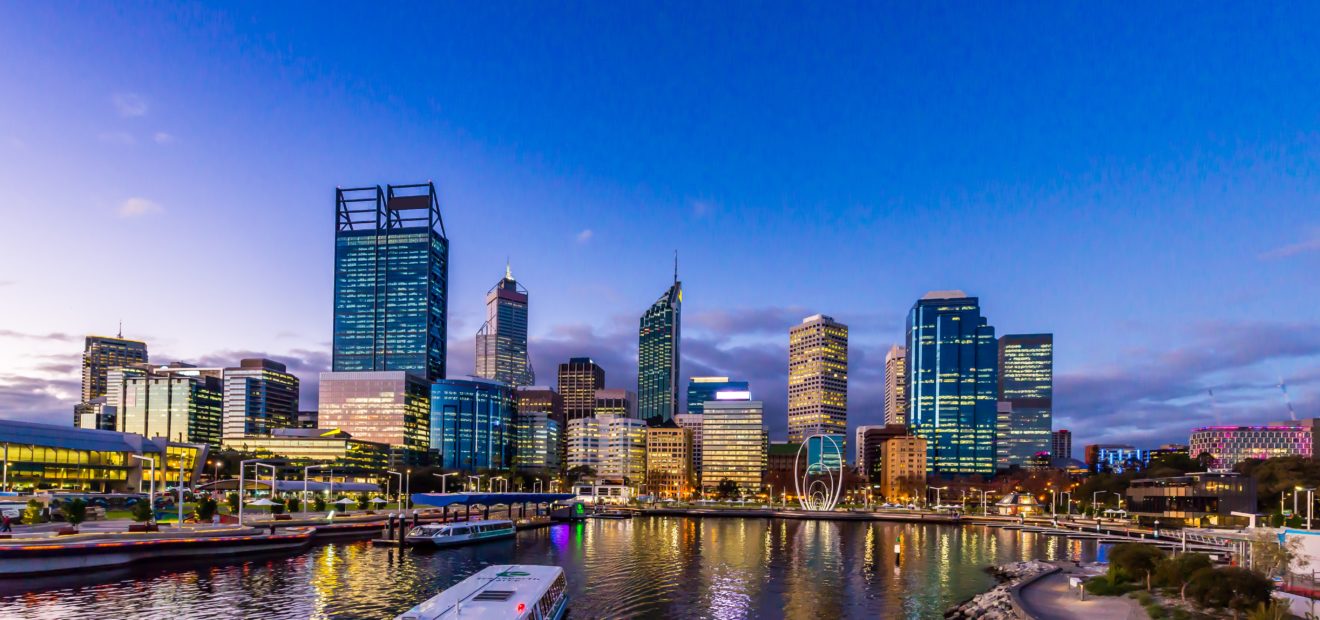- Previous
- Share

Elizabeth Quay-Perth, capital of Western Australia, where the Swan River meets the southwest coast.
Border strength, resources sector help WA power through pandemic
Western Australia solidified its status as the nation’s economic powerhouse in 2021, with the State’s border restrictions insulating it from the pandemic and driving a swift economic recovery.
WA’s rate of economic growth in the past 12 months was the fastest since 2012, but while the resources sector set new records for export revenue, a lack of international migration contributed to a tight labour market.
As a result, wages growth strengthened, and contributed to stronger domestic consumption patterns, which had also been aided by the travel restrictions.
With no options to travel interstate or overseas, Western Australians’ disposable income was redirected towards intrastate travel, retail expenditure, and real estate, which was a boon for many local businesses.
In the property sector, rising costs of construction materials and supply chain bottlenecks continue to be a major issue for builders and developers. The fast-spreading Omicron variant is adding pressure to supply chains and could further extend delayed projects and push costs even higher.
“With no panacea emerging for the increasingly costly delays, the potential for negative impacts on financial viability and new supply in the apartment sector could rise,” Cygnet West Chief Executive Officer Imran Mohiuddin said.
“However, housing accommodation in WA is already stretched and relatively expensive. In contrast, apartments have lagged in rent and price growth – right now available apartment stock outweighs standalone housing, which means 2022 looks likely to be the year of the apartment comeback.”
The eventual opening of WA’s borders, now delayed from February 5, will see a rebound in interstate and international travel which is likely to see a degree of disposable income head out of the state – and this could have an impact on both retail expenditure growth and house prices.
“The flipside of that of course is that investors are once again going to be free to come to WA to inspect assets and add to their portfolios, and we expect to see that result in a major uptick across a number of sectors of the commercial property market,” said Mr Mohiuddin.
“Conversely, we may see instances of east coast investors liquidating WA assets and returning home. The impacts of removed restrictions around border controls will be one to watch.”
Mr Mohiuddin said the recent removal of the RBA’s ‘yield curve control’ mechanism alongside rising inflation, bond yields and fixed interest rates, has given credence to a forecast of an earlier than expected increase in interest rates.
“The overall outlook for WA remains positive. The state’s budget is in an enviable position and Deloitte Access Economics forecast WA GSP growth will increase to 2.5 per cent in 2021-22, followed by further growth of 3.75 per cent in 2022-23,” said Mr Mohiuddin.
“As economies continue to recover and investment in infrastructure and renewable energy increases, WA is expected to maintain its favourable position on the supply side of this equation.
“The fundamentals for the WA property market are solid, and we are very well positioned for a strong 2022 – and going into the new year as Western Australia’s biggest independent full-service agency, we’re genuinely excited about the opportunities that lie ahead.”

